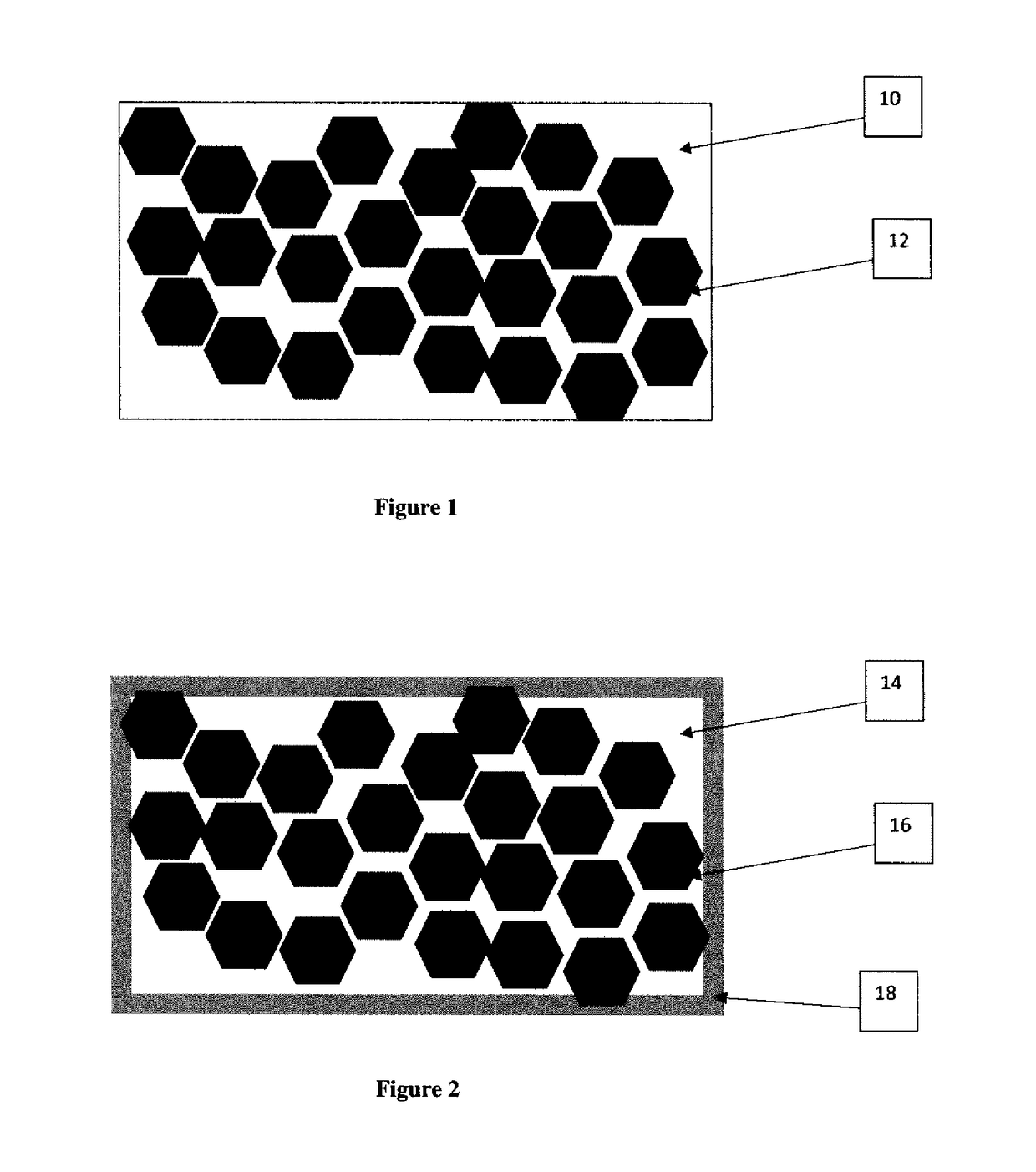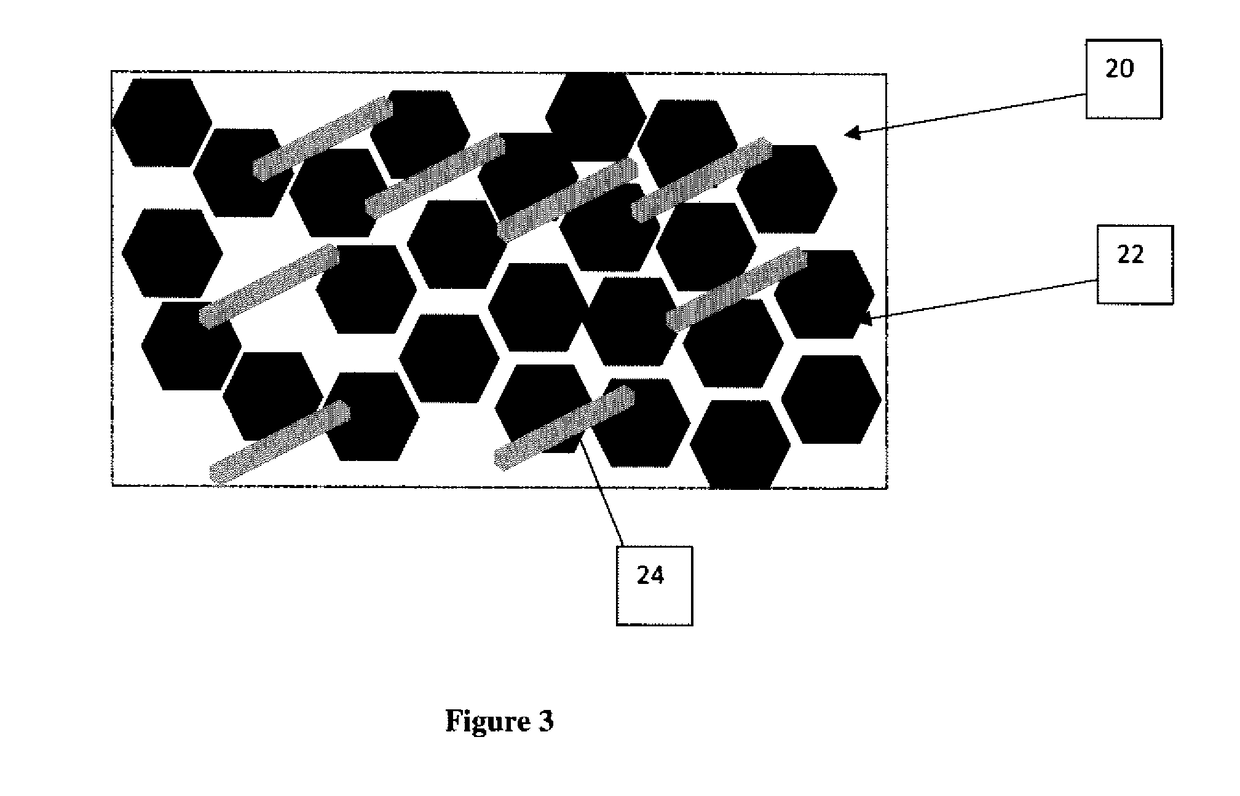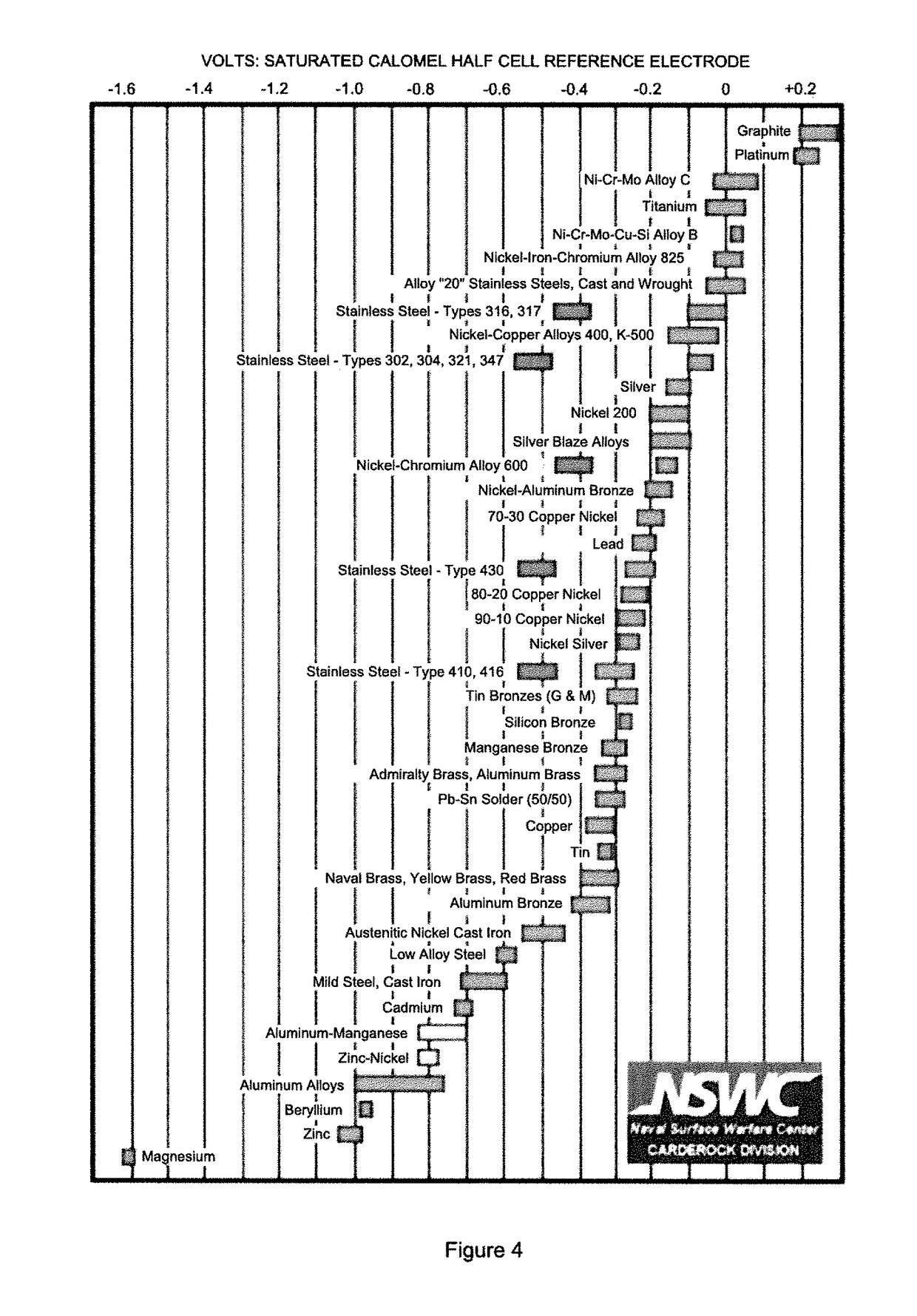Degradable Metal Matrix Composite
a metal matrix and composite technology, applied in the field of degradable metal matrix composites, can solve the problems of high sensitivity to other types of degradation and aqueous corrosion, and achieve the effect of improving mechanical properties and reducing porosity
- Summary
- Abstract
- Description
- Claims
- Application Information
AI Technical Summary
Benefits of technology
Problems solved by technology
Method used
Image
Examples
example 1
[0061]Boron carbide powder with an average particle size of 325 mesh is surface modified by the addition of zinc by blending 200 grams of B4C powder with 15 grams of zinc powder and heated in a sealed, evacuated container to 700° C. to distribute the zinc to the particle surfaces. The zinc-coated B4C powder is placed into a graphite crucible and heated to 500° C. with an inert gas cover. In a separate steel crucible, 500 grams of Terves FW low temperature dissolvable degradable magnesium alloy is melted to a temperature of 720° C. The degradable magnesium alloy is poured into the 8-inch deep graphite crucible containing the zinc-coated B4C particles sufficient to cover the particles by at least two inches and allowed to solidify.
[0062]The material had a hardness 52 Rockwell C, and a measured dissolution rate of 35 mg / cm2 / hr. in 3 vol. % KCl at 90° C.
example 2
[0063]300 g of 600 mesh boron carbide powder was placed to a depth of 4″×2″ diameter by ten-inch deep graphite crucible containing a two inch layer of ¼″ steel balls (600 g of steel) covered by a 325 mesh steel screen and heated to 500° C. under inert gas. The graphite crucible was heated inside of a steel tube, which was heated with the crucible. Five pounds of Terves FW degradable magnesium alloy were melted in a steel crucible to a temperature of 730° C. and poured into the graphite crucible sufficient to cover the B4C and steel balls to reach within two inches of the top of the graphite crucible. The crucible was removed from the furnace and transferred to a 12-ton carver press, where a die was rammed into the crucible forcing the magnesium into and through the powder bed. The crucible was removed from the press and allowed to cool.
[0064]The MMC section was separated from the non-MMC material and showed a dissolution rate of 45 gm / cm2 / hr. at 90° C. in 3 vol. % KCl solution. The ...
example 3
[0065]125 grams of 325 mesh B4C powder was blended with 4 grams of 100 mesh titanium powder and sintered at 500° C. to form a rigid preform. A 500 gram ingot of TAx-50E dissolvable metal alloy was placed on top of the preform in a graphite crucible. The crucible was placed in the inert gas furnace and heated to 850° C. for 90 minutes to allow for infiltration of the preform. The infiltrated preform had a hardness of 24 Rockwell C.
PUM
| Property | Measurement | Unit |
|---|---|---|
| particle size | aaaaa | aaaaa |
| temperature | aaaaa | aaaaa |
| compressive strength | aaaaa | aaaaa |
Abstract
Description
Claims
Application Information
 Login to View More
Login to View More - R&D
- Intellectual Property
- Life Sciences
- Materials
- Tech Scout
- Unparalleled Data Quality
- Higher Quality Content
- 60% Fewer Hallucinations
Browse by: Latest US Patents, China's latest patents, Technical Efficacy Thesaurus, Application Domain, Technology Topic, Popular Technical Reports.
© 2025 PatSnap. All rights reserved.Legal|Privacy policy|Modern Slavery Act Transparency Statement|Sitemap|About US| Contact US: help@patsnap.com



